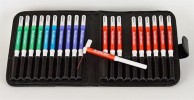Authors
BH Lee, J Kang, HY Kim et al
Lab
Department of Physiology, College of Korean Medicine, Daegu Haany University, Daegu 42158, Korea
Journal
International Journal of Molecular Sciences
Abstract
Abstract: Background: In the present study, we examined superoxide-mediated excitatory nociceptive transmission on at-level neuropathic pain following spinal thoracic 10 contusion injury (SCI) in male Sprague Dawley rats. Methods: Mechanical sensitivity at body trunk, neuronal firing activity, and expression of superoxide marker/ionotropic glutamate receptors (iGluRs)/CamKII were mea sured in the T7/8 dorsal horn, respectively. Results: Topical treatment of superoxide donor t-BOOH (0.4 mg/kg) increased neuronal firing rates and pCamKII expression in the naïve group, whereas superoxide scavenger Tempol (1 mg/kg) and non-specific ROS scavenger PBN (3 mg/kg) decreased firing rates in the SCI group (* p < 0.05). SCI showed increases of iGluRs-mediated neuronal firing rates and pCamKII expression (* p < 0.05); however, t-BOOH treatment did not show significant changes in the naïve group. The mechanical sensitivity at the body trunk in the SCI group (6.2 ± 0.5) was attenuated by CamKII inhibitor KN-93 (50 microg, 3.9 ± 0.4) or Tempol (1 mg, 4 ± 0.4) treatment (* p < 0.05). In addition, the level of superoxide marker Dhet showed significant increase in SCI rats compared to the sham group (11.7 ± 1.7 vs. 6.6 ± 1.5, * p < 0.05). Conclusions: Superoxide and the pCamKII pathway contribute to chronic at-level neuropathic pain without involvement of iGluRs following SCI.
BIOSEB Instruments Used:
Von Frey Filaments (Bio-VF-M)

 Pain - Thermal Allodynia / Hyperalgesia
Pain - Thermal Allodynia / Hyperalgesia Pain - Spontaneous Pain - Postural Deficit
Pain - Spontaneous Pain - Postural Deficit Pain - Mechanical Allodynia / Hyperalgesia
Pain - Mechanical Allodynia / Hyperalgesia Learning/Memory - Attention - Addiction
Learning/Memory - Attention - Addiction Physiology & Respiratory Research
Physiology & Respiratory Research
 Pain
Pain Central Nervous System (CNS)
Central Nervous System (CNS) Neurodegeneration
Neurodegeneration Sensory system
Sensory system Motor control
Motor control Mood Disorders
Mood Disorders Other disorders
Other disorders Muscular system
Muscular system Joints
Joints Metabolism
Metabolism Cross-disciplinary subjects
Cross-disciplinary subjects Happy new year 2025
Happy new year 2025 